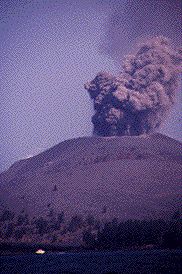Dispersal

A species' range will be changed if the members of the species move in space, a process called dispersal. Individual animals and plants move, actively and passively, through space both in order to seek out unoccupied areas and in response to environmental change. The place where the species originated is called its center of origin. Various dispersal routes might have been followed in the biogeographic history of a species.
Dispersal happened in the following ways:
• Corridors. Two places are joined by a corridor if they are part of the same land mass: Georgia and Texas, for example. Animals can move easily along a corridor and any two places joined by a corridor will have a high degree of faunal similarity.
• A filter bridge is a more selective connection between two places, and only some kinds of animals will manage to pass over it.
• Sweepstakes routes are hazardous or accidental dispersal mechanisms by which animals move from place to place. The standard examples are island hopping and natural rafts.
Powerful evidence for the power of dispersal comes from the Indonesian island of Krakatoa. In 1883 a volcanic eruption covered the island with ash, killing all plants and animals. The recolonization was astonishingly rapid: fifty years later the island was completely covered with tropical forest.
The image opposite is of Krakatoa, still active in more recent years.
| Next |



